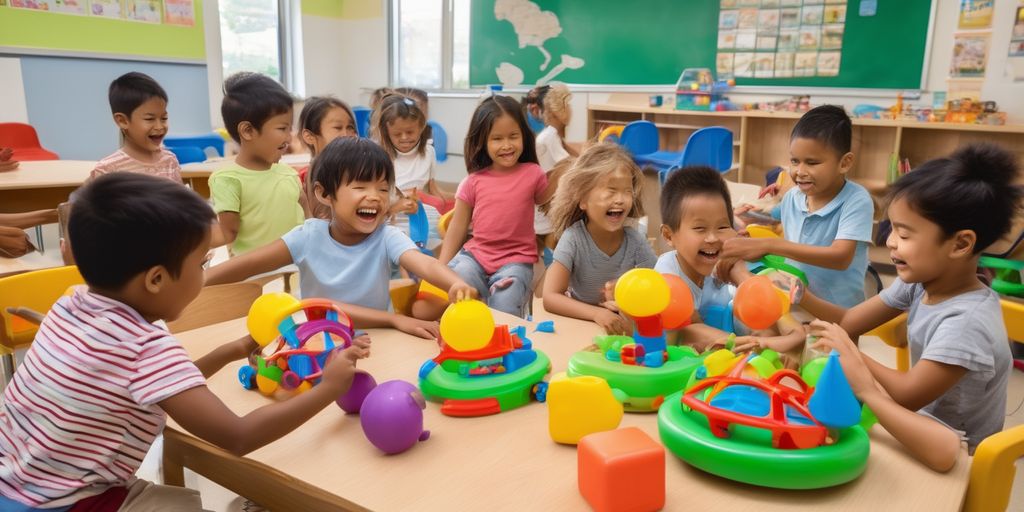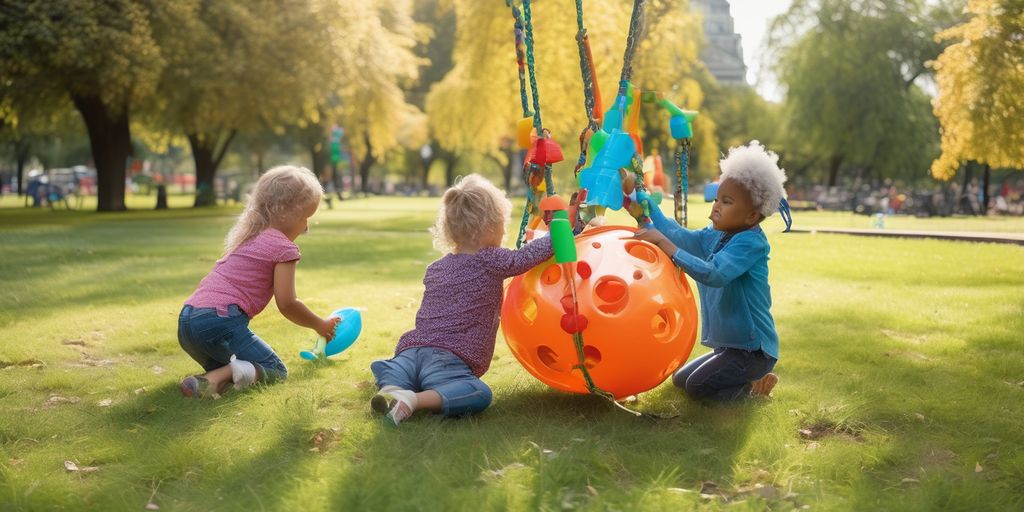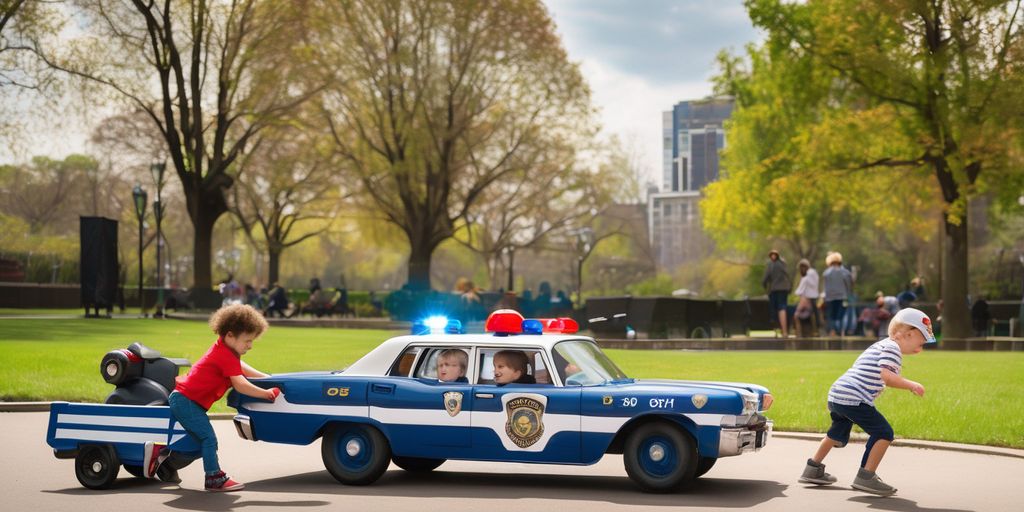Educational ride-on toys have become a staple in early childhood education, offering a myriad of benefits that go beyond mere entertainment. These toys play a crucial role in promoting physical, cognitive, social, and emotional development in young children. By integrating ride-on toys into educational settings, parents and educators can provide children with opportunities to learn and grow in a fun and engaging way.
Key Takeaways
- Educational ride-on toys enhance both fine and gross motor skills, aiding physical development.
- These toys stimulate cognitive growth by encouraging problem-solving, spatial awareness, and creativity.
- Ride-on toys support social and emotional development by building confidence, encouraging cooperative play, and aiding emotional regulation.
- Increased physical activity through ride-on toys promotes outdoor play, reduces screen time, and fosters healthy habits.
- Choosing age-appropriate and safe ride-on toys ensures children gain the maximum developmental benefits while staying safe.
Promoting Physical Development
Educational ride-on toys play a crucial role in promoting a child’s physical development. They encourage fine and gross motor skills, coordination, balance, and spatial awareness.
Enhancing Fine Motor Skills
Ride-on toys often require children to use their hands to grip handles, press buttons, or manipulate small parts. This helps in developing their fine motor skills, which are essential for tasks like writing and buttoning clothes.
Boosting Gross Motor Skills
Increased physical activity not only keeps children fit but also contributes to their overall health. From enhanced cardiovascular health to improved muscle tone, these mini-vehicles are gateways to a healthier lifestyle.
Improving Balance and Coordination
At Kids’ Care Club, children will have access to a larger playground that gives them movement toys, such as trikes, that reward their growing physical confidence. Below are some of our recommendations:
- Introduce toys that encourage physical play
- Start to use a tricycle, ensuring safety principles
- Basketball Hoops
- T-Ball Stands
- Bowling Sets
- Drawing Easel
- See and Say games or books
- Magnetic building blocks
- Legos
- Counting toys
Ride-on toys are excellent for improving balance and coordination as children learn to steer, push, and kick around, getting their legs moving and using their core for balance.
Encouraging Cognitive Growth
Educational ride-on toys play a crucial role in fostering cognitive development in children. These toys are designed to stimulate various aspects of cognitive growth, making learning an enjoyable experience for young minds.
Supporting Social and Emotional Development
Educational ride-on toys play a crucial role in supporting children's social and emotional development. These toys provide opportunities for children to interact with their peers, build confidence, and learn essential emotional regulation skills.
Increasing Physical Activity
Educational ride-on toys play a crucial role in increasing physical activity among young children. These toys are not just fun; they are an exercise in disguise. Children burn off energy and soak up the benefits of physical activity with every ride.
Choosing the Right Ride-On Toy
Selecting the perfect ride-on toy for your child involves several important considerations to ensure both fun and safety. It's crucial to match the toy to your child's age and developmental stage. This not only maximizes enjoyment but also supports their growth effectively.
Age-Appropriate Options
When choosing a ride-on toy, consider the age recommendations provided by the manufacturer. These guidelines are designed to ensure that the toy is suitable for your child's physical and cognitive abilities. For younger children, options like rocking horses or simple push toys are ideal. As they grow, you can introduce more complex toys like pedal cars or electric ride-ons.
Safety Considerations
Safety should always be a top priority. When checking for safety features, look for vehicles with automatic brakes, adjustable or remote-controllable speed settings, and sturdy frames to ensure your child's well-being. Additionally, always ensure that the toy meets the relevant safety standards and guidelines.
Popular Types of Ride-On Toys
There are various types of ride-on toys available, each offering unique benefits. Some popular options include:
- Pedal Cars: Great for building leg strength and coordination.
- Electric Ride-Ons: Offer a thrilling experience with added features like lights and sounds.
- Rocking Horses: Perfect for younger children to develop balance.
- Scooters: Help improve balance and are excellent for outdoor play.
Choosing the right ride-on toy can significantly enhance your child's physical, cognitive, and emotional development. Make sure to consider all factors to provide a safe and enjoyable experience.
Integrating Ride-On Toys in Educational Settings
Incorporating in Preschool Curriculum
Integrating preschool ride-on toys into the curriculum can be a game-changer. These toys combine fun and educational value, promoting physical activity, cognitive learning, creativity, and social interactions. Teachers can design activities that incorporate ride-on toys to enhance various developmental skills.
Using in Therapy Sessions
Ride-on toys are also valuable in therapy sessions. They can be used to support children with physical or cognitive challenges, providing a playful yet effective way to work on motor skills, balance, and coordination. Therapists often use these toys to create engaging and therapeutic activities.
Creating Inclusive Play Environments
Creating inclusive play environments with ride-on toys ensures that all children, regardless of their abilities, can participate. This approach fosters a sense of community and encourages cooperative play. Safety, educational elements, and trusted brands should be emphasized when selecting toys for these settings.
An integrative approach to child development includes physical activity, cognitive learning, creativity, and social interactions. Ride-on toys can play a crucial role in this holistic development.
Long-Term Benefits of Ride-On Toys
Ride-on toys are instrumental in developing lifelong physical skills. Children who engage with these toys often exhibit improved balance, coordination, and motor skills that persist into adulthood. These foundational abilities are crucial for participating in various sports and physical activities later in life.
The cognitive benefits of ride-on toys extend well beyond early childhood. By stimulating problem-solving abilities and enhancing spatial awareness, these toys lay the groundwork for complex cognitive tasks. This early stimulation can lead to better academic performance and a heightened ability to tackle challenges.
Ride-on toys also contribute to long-term social and emotional development. They help build confidence and independence, which are essential traits for personal and professional success. Additionally, these toys encourage cooperative play, fostering essential social skills that children carry into adulthood.
The benefits of ride-on toys are not just immediate but have lasting impacts that shape a child's future in multiple dimensions.
Conclusion
In conclusion, educational ride-on toys are far more than mere playthings; they are essential tools in early childhood development. These toys promote fine and gross motor skills, increase physical activity, and improve balance and spatial awareness. They also foster cognitive development and nurture social and emotional well-being. By integrating ride-on toys into your child's playtime, you are not only providing them with endless fun but also equipping them with the skills necessary for a brighter future. Parents, consider these miniature wonders as invaluable assets in your child's educational journey.
Frequently Asked Questions
What are the main benefits of educational ride-on toys?
Educational ride-on toys promote fine and gross motor skills, increase physical activity, develop balance skills, improve spatial awareness, build confidence, and inspire imagination.
At what age can children start using ride-on toys?
Children can start using age-appropriate ride-on toys as early as 12 months, but it is important to choose toys that are suitable for their developmental stage and abilities.
How do ride-on toys improve motor skills?
Ride-on toys help improve motor skills by encouraging children to use their arms and legs to push, pull, pedal, and steer, which enhances both fine and gross motor development.
Are ride-on toys safe for toddlers?
Yes, ride-on toys are safe for toddlers when chosen appropriately for their age and developmental stage. Always ensure that the toys meet safety standards and supervise playtime.
Can ride-on toys be used indoors and outdoors?
Yes, many ride-on toys are versatile and can be used both indoors and outdoors. However, it is important to ensure that the play area is safe and free of obstacles.
How do ride-on toys support cognitive development?
Ride-on toys support cognitive development by stimulating problem-solving abilities, enhancing spatial awareness, and fostering creativity and imagination through interactive play.



Leave a comment
This site is protected by hCaptcha and the hCaptcha Privacy Policy and Terms of Service apply.